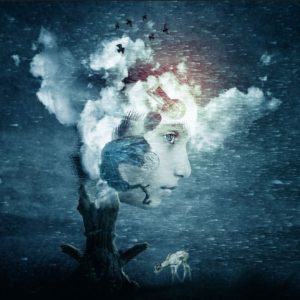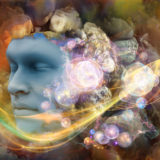
Table of Contents
What is Shamanism?
Shamanism is the oldest spiritual practice, dating back as far as 25,000 years. It is a healing tradition closely connected to nature, and is grounded in the belief that all things are manifestations of Spirit. Everything is connected. Though this is an ancient belief, 21st century quantum mechanics is renewing an interest in the significance of the inter-relatedness of all things. Shamanism is not a religion, because it has no single founder, dogma, sacred book, organization or leader. Most indigenous societies practice some form of shamanism, though it is known by many names.
Who are Shamans?
“A shaman is someone who is regarded as having access to, and influence in, the world of benevolent and malevolent spirits, who typically enters into a trance state during a ritual, and practices divination and healing.” (Wikipedia)
They are called shamans, elders, medicine men, and wisdom-keepers. The shaman does not choose this path but are “called.” Shamanic practice consists of ritual drumming, taking hallucinogens, and journeying into other realms. They access information available to them in non-ordinarily realities by altering attentional states. The shaman works on behalf of a community that has given them psychological and spiritual leadership authority. They teach that all healing includes a spiritual dimension.
The core beliefs of the shaman are similar in all cultures.
Everything is alive. Everything has spirit and awareness.
Energy and matter are the same. Everything is vibration. Everything that exists is an energy system within a greater energy system.

Everything is connected to everything in a web of energy or life. Living energy animates the world and organizes matter.
Unseen spiritual reality affects visible reality.
The healer tries to create balance and harmony of the spirit. This balance includes the physical, emotional, mental and spiritual aspects of the person. They use various rituals like soul retrieval, negative energy extraction, physical manipulation, and dream interpretation. The shaman attunes to non-ordinary reality, and works with living energy to heal.
While most people try to “fix” problems at the level of thinking, the shaman believes this physical level of reality is dense, and slow to change. Deep healing can occur more quickly and completely on the energetic level. Shamanic rituals work to clear pre-conscious belief systems set in childhood, and reclaim soul fragments which are lost aspects of ourselves.
The shaman believes that humans are self-aware, and unlike animals, can learn to influence their consciousness. They teach that the Divine is unlimited consciousness, beyond human understanding.
The shaman works with seven levels of consciousness:
Personal consciousness: most people are not “awake” and live in a state where they only pursue material pleasures. They do not know themselves. To start a spiritual path they must ask the question, “what am I doing here?”
Human Consciousness: most people live an egocentric life. Their life revolves around themselves and their personal needs and pleasures. When consciousness expands further, there is the experience of a connection of all humankind on a vast energetic level. Carl Jung called this the “collective unconscious.”
Amphibious Consciousness: beyond mankind you will discover a connection with all living beings. The universe is a tapestry woven by the Divine. You are not a separate being. Everything (even a rock) is alive and connected on an energetic level.
Spherical Consciousness: in meditation you quiet the linear mind and become aware of everything simultaneously. Distance is not an obstacle. Perception is in all directions at once. At this level there is no sense of body.
Crystal Consciousness: this level of awareness is about purification. The first four levels of consciousness are organic, but the crystal level is inorganic. This means it is not distorted by the five senses. This is why shamans use crystals in their healing practice. They invoke this level of consciousness through the use of crystal consciousness.
Light Consciousness: we know that sunlight gives life, however we rarely think about how light carries information, and that light that has traveled for billions of years carries information about the universe. Light from other dimensions can also reach us.
Sound Consciousness: sound is the basis of existence, called the Primal Sound. Shamans use drums and rattles to induce trance for healing.
These levels of consciousness are correlated with the seven chakras of the body, often taught in Eastern religion and philosophies. “We are what we think. Everything we are arises from our thoughts. With our thinking we create the world.” (Buddha)
Shamanism believes that Dreaming spans both the sleeping dream and the waking dream, and that together we dream the world. Dreamtime (as it is often called): is the creative matrix, that penetrates all matter. Brave dreaming helps you create from the energetic level. (Alberto Villoldo, Ph.D.)
The importance of dreams.
In the shaman view of dreams, ancestors visit us, we journey into other realms, we fly.
Dreams happen in a reality that is interdependent, a living system of Spirit. Reality is “fluid and all-pervasive”, and the dream world is as real as the waking world. “The Dreaming” is the ultimate reality and is “created, inhabited and sustained by Spirit.” The Spirit “manifests” infinite forms, whether in the dream or waking world. The shaman heals by guiding damaged souls back to harmony with all things. They often do this by “journeying” into other realms (or worlds), seen as part of the greater Dreaming. The shaman travels into three main realms (though there are infinite worlds within in these three) – the Lower, Middle, and Upper world. When they journey, they encounter Spirit and bring back what they learn to apply to this concrete world. (Compass Dreamworks)
 There are ten ways to help understand the true meaning behind your dreams. According to shamanic practice, dream work is used to discover how we fit into the universe. Western culture, on the other hand, often denies the reality of dreams having meaning, but believe them only a collection of random images produced by the brain. The shaman believes by tuning into our dream energies and symbols one can learn about the future self and the correct spiritual path. The energy body (subtle body) during sleep can explore other realms. Because the energy body is embedded in time/space it can journey without bounds. While dreaming we can even time travel.
There are ten ways to help understand the true meaning behind your dreams. According to shamanic practice, dream work is used to discover how we fit into the universe. Western culture, on the other hand, often denies the reality of dreams having meaning, but believe them only a collection of random images produced by the brain. The shaman believes by tuning into our dream energies and symbols one can learn about the future self and the correct spiritual path. The energy body (subtle body) during sleep can explore other realms. Because the energy body is embedded in time/space it can journey without bounds. While dreaming we can even time travel.
Michael Harner, a world leading shaman, teaches ten core principles about dreams and how to decode their messages.
Spirits are real. Every part of understanding your dreams is based on accepting that spirits exist in a variety of capacities.
Spirits produce dreams. Whether it is your own soul or another spirit that you have entangled with, all dreams are created by spirits.
Spirits have a variety of characteristics and are interested in different aspects of life Different spirits will send different messages, with their own mix of symbols and metaphors.
Spirits that produce dreams can be personal souls such as guardian spirits or suffering spirits. The suffering beings are usually people who have died suddenly, or traumatically, and haven’t come to terms with their new state of being. Dreams containing these suffering spirits will usually be nightmares.
Nightmares can be helpful warnings or simply the sign of a suffering spirit.
People with a higher state of consciousness are more resistant to suffering souls. A greater spirit power will act like a force field and offer protection from suffering spirits.
Guardian spirits manifest in “Big Dreams.” These dreams often repeat themselves, or overwhelm the dreamer with emotions which may alter their life path.
To a shaman dreams include sleeping dreams, waking dreams, daydreams and visions.
To learn the meaning of your dream you can merge with a helping spirit or shaman.
Dream interpretations are based on analyzing metaphors and symbols that appear in the dream.
There are steps you can take to help remember your dreams for analysis.
Write down an intention before sleep to remember your dreams.
Start a dream journal and write down what you remember immediately upon awakening.
Think about the meaning of the dream and write down any impressions.
Write down keywords or images that come to mind.
Focus in on a specific aspects of the dream however small – like a smell or color.
Do not change any dream detail, and do not try to interpret right away,
Accept the dream as it is, even if it makes no sense.
Write down how you felt during the dream, and after waking.
Tell someone about the dream to start your mind working on its interpretation.
Lucid Dreaming

During lucid dreams you become aware while dreaming. This allows the dreamer to alter their dream. Incredibly, during a lucid nightmare, you, the dreamer, can “face the fear” (perhaps a monster, or an invisible danger), which will then change and releasing the fear.
Though rare, some people can induce lucid dreaming. Scientists have studied this state by having the dreamer signal with “pre-arranged eye movements” while asleep, at the beginning of their lucid dream. Neuroscientists then study the brain function through electrodes worn by the dreamer.
Conclusions
One of the most powerful shamanistic practices is the interpretation of dreams. The shaman enters into non-ordinary states of consciousness to learn the best means for healing a person. In the dreamworld, time and place is fluid and therefore the shaman can journey through time travel gathering important (often metaphorical) information, that will unlock the mysterious negative energies holding back a person from healing and growth.
References:
New to Shamanism? Society for Shamanic Practice. 2018
Shamanic Dream Perspectives. 2014. Kirstenbackstrom. (Compass Dreamwork)
13 Levels of Shamanic Dreaming. (Robert Moss, beliefnet)
Shamanism and Dreams (Richard A. Russo) The Dream Institute. 2018
Shamanic Dreaming: Robert Moss, Shamanic Counselor and Dream Teacher
What can we learn from shaman’s dreaming? A cross-cultural exploration. APA PsycNET
Laughlin, C.D., & Rock A.J. (2014) 233-252
http://theheartysoul.com. 2018
The Meaning of Lucid Dreaming. Vaughan Bell 2014. theguardian.com/science(Alberto Villoldo, Ph.D.; The Four Winds Society)




